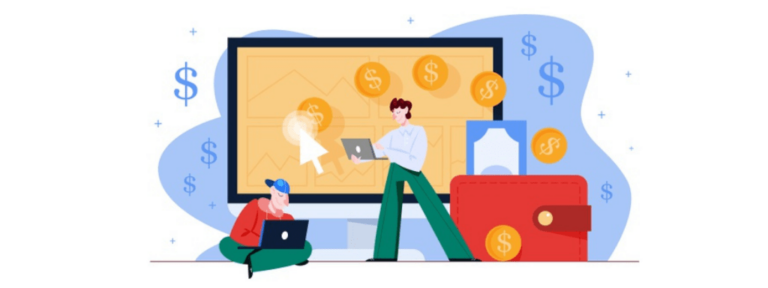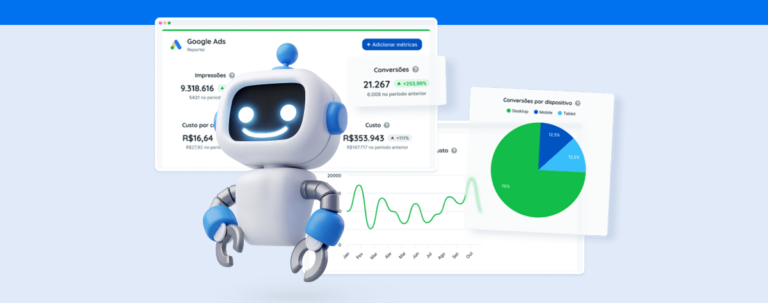Is there a difference between remarketing and retargeting? Here’s a breakdown of each strategy and how to leverage them in your projects
For those involved in digital marketing, especially in ad campaigns, the strategies of remarketing and retargeting should sound familiar. It’s common to see both terms treated as synonyms, even though they technically cater to distinct objectives.
Both are related to actions aimed at reaching an audience that has already engaged with your brand and might become a customer (or make another purchase) in the future. To achieve this, they utilize emails, ads on Google’s partner sites (those that “follow” users after visiting a specific product, for example), and other methods.
However, even starting from the same premise, these strategies differ in the audience they aim to reach and the stage of the buying journey the audience is at.
Therefore, we’ve prepared this article to explain what remarketing and retargeting are, when to utilize them efficiently in your campaigns, and how to achieve better results in your digital marketing projects. Let’s dive in.
What is Retargeting?
First, let’s discuss retargeting: a strategy focused on interacting with users who have engaged with the brand at some point but have not yet made a purchase.
That is, they have entered the sales funnel – whether by visiting the website or signing up for a premium content piece – but still need a nudge to become a customer of the company.
For example, it’s quite common that, after searching for a product on an e-commerce site, you start receiving ads about that same product on Google’s Display Network, YouTube, or partner apps, right?
This process is part of the retargeting strategy and aims to keep that product top of mind for the consumer until they decide to make the purchase.
How to Use Retargeting?
If you have access to data from your potential customers and wish to boost new interactions with the brand, you can develop various retargeting actions. Among the main ones, it’s worth considering:
- Ads on Google’s partner sites or YouTube, to reach users who visited your product or solution pages but haven’t yet completed the desired action;
- Sending email campaigns to help leads move down the funnel, remember visited products, or return to an abandoned cart, for example;
- Displaying ads on social media, such as Twitter and Instagram, to reach users who engage with your pages or profiles. Increasingly, platforms are offering resources to more precisely segment the audience and create campaigns really focused on the stages of the buying journey.
Indeed, segmentation should be the watchword when it comes to retargeting, to ensure potential customers are reached at the right moment.
Moreover, as it involves having access to user data (such as permission to use cookies and email registration), this type of strategy must be well aligned with the company’s Privacy Policies and the General Data Protection Law (LGPD).
What is Remarketing?
Now that we know what retargeting is and how to use it, it’s time to discuss remarketing and the difference between the two terms – which began to be used distinctly and merged over time.
Previously, remarketing was commonly associated with email campaigns aiming to re-engage with customers, while retargeting targeted top-of-funnel paid media campaigns. However, both terms started to be used synonymously by many professionals, leading to some confusion when understanding the strategies.
Therefore, it’s important to note that, according to sources like Search Engine Journal, remarketing – even seeking re-engagement through actions beyond email – focuses on those who are already customers of the company and may purchase a new product, renew a subscription, or perform another buying action.
Thus, its goal is to reach those in the loyalty stage, opening doors for companies to increase their revenue from people who have already tried their solutions.
In other words, while retargeting relates to the potential customer and aims to lead them to the bottom of the funnel, remarketing encourages repurchase, upsell, or even the return of a former buyer.
How to Use the Remarketing Strategy?
Like retargeting, remarketing uses channels such as email and paid media to reach customers. However, the main difference lies in the segmentation and the content disseminated, as the purpose is to encourage new purchases.
Thus, the message is directed at those who already know the brand and may bring offers or special conditions that stimulate re-engagement.
For example, a SaaS might offer a new service at a lower price to former customers, while an e-commerce can create discount coupons and send them in creative campaigns.
Remarketing vs Retargeting: Which Strategy is Better?
Differentiating between remarketing and retargeting is the starting point for professionals who want to further refine their audience reach strategies, proposing actions for both potential customers and those who have made or are part of the team.
Therefore, the ideal is to know how to combine actions within your planning, taking into account the objectives to be achieved. For example, you could use retargeting if the focus is on expanding your customer base or use remarketing if you want to increase the average ticket size from the customers you already have.
Now that you know the difference between remarketing and retargeting, it’s just a matter of evaluating how to integrate both strategies into your marketing calendar and start developing actions for your projects!





